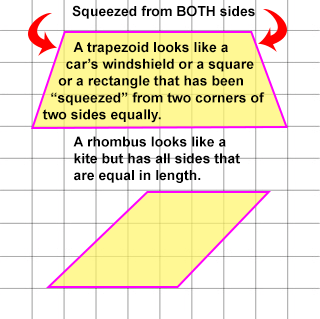Quadrilateral > Trapezoid
TRAPEZOID
DEFINITION
A trapezoid is a quadrilateral that has A PAIR OF OPPOSITE PARALLEL SIDES.
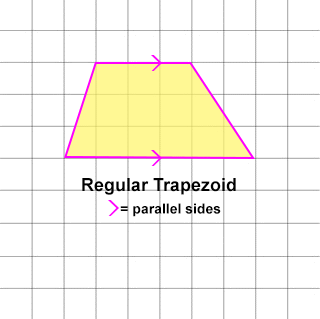
When the sides that are NOT parallel are equal in length and both angles coming from a parallel side are equal, it is called an Isosceles Trapezoid.
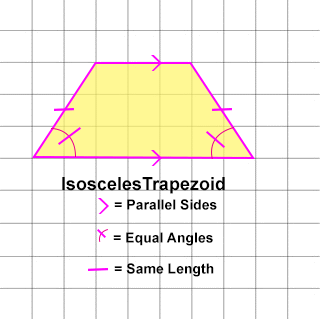
INTERESTING FACTS:
- Like a isosceles triangle that has at least two equal sides, an isosceles trapezoid has equal sides and angles. In fact, it is helpful to think of an isosceles trapezoid as an isosceles triangle with its "top" cut off.
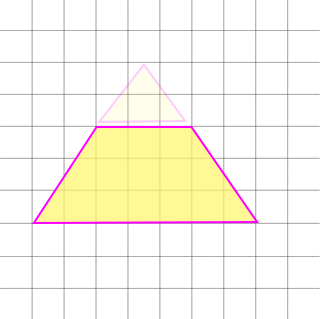
- A trapezoid is called a "trapezium" in the UK but its definition is opposite the US with NO parallel sides.
IT IS HELPFUL TO THINK
It is helpful to think of a TRAPEZOID as looking at a SQUARE from a top-level perspective view.
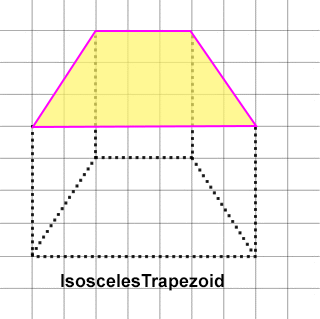
TRADITIONAL FORMULA
FORMULA 1: AreaTrapezoid = (base1 + base2)/2 x height
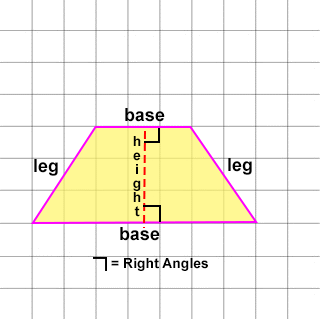
NOTES:
- The BASES are the two (2) parallel sides.
- The LEGS are the two (2) non-parallel sides.
- The HEIGHT is the distance at right angles from one base to the other base.
FORMULA 2: AreaTrapezoid = median x height
MEDIAN - A trapezoid’s median is the segment that connects the middle of its legs. Its length is equal to the average lengths of the bases (base1 + base2)/2.
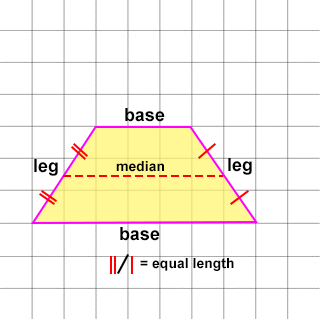
THINKING INSIDE THE BOX
If you place a ISOSCELES TRAPEZOID inside of a box (a rectangle or a square), then you can MOVE ONE of its side to the opposite side of the trapezoid to obtain a rectangle or a square.
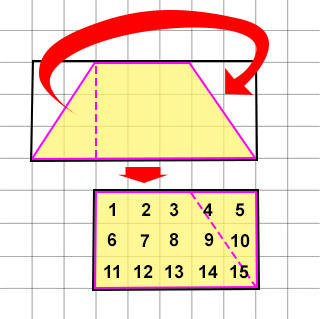
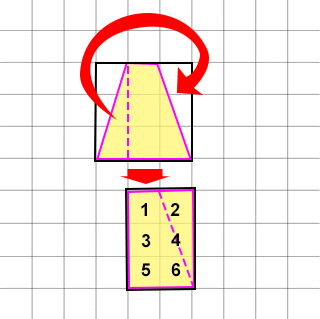
If you place a REGULAR TRAPEZOID inside of a box (a rectangle or a square), then you can FOLD BOTH of its sides to the same sides to obtain a rectangle or a square.
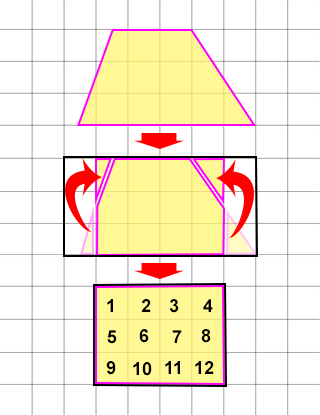
KEY: As a result, you can use the rectangle formula to determine a trapezoid area where the median is treated as the width.
EXAMPLES
An ISOSCELES trapezoid with a base1 of 3 in, base2 of 7 in and a height of 3 in has an area of:
- Calculate the median (from Formula 2) which is treated as the width: Median (width) = (base1 + base2)/2 = (3 in +7 in)/2 = 10 in/2 = 5 in
- Use the rectangle formula instead (AreaTrapezoid = height x width).
AreaTrapezoid = 3 in x 5 in = 15 in2
An ISOCELES trapezoid with a base1 of 1 in, base2 of 3 in and a height of 3 in has an area of:
- Calculate the median (from Formula 2) which is treated as the width: Median (width) = (base1 + base2)/2 = (1 in +3 in)/2 = 4 in/2 = 2 in
- Use the rectangle formula instead (AreaTrapezoid = height x width).
AreaTrapezoid = 3 in x 2 in = 6 in2
A REGULAR trapezoid with a base1 of 2.5 in, base2 of 5.5 in and a height of 3 in has an area of:
- Treat the median as the width (from Formula 2). Median (width) = (base1 + base2)/2 = (2.5 in + 5.5 in)/2 = 8 in/2 = 4 in
- Use the rectangle formula instead (AreaTrapezoid = height x width).
AreaTrapezoid = 3 in x 4 in = 12 in2
REFERENCE: See screenshots above for graphic representations.
MEMORIZATION TIP
To help remember the different between a trapezoid and a rhombus shape, think of a trapezoid as looking at the back of a car's windshield and think of a rhombus as a slanted box that has been stretched so that all sides are equal.
